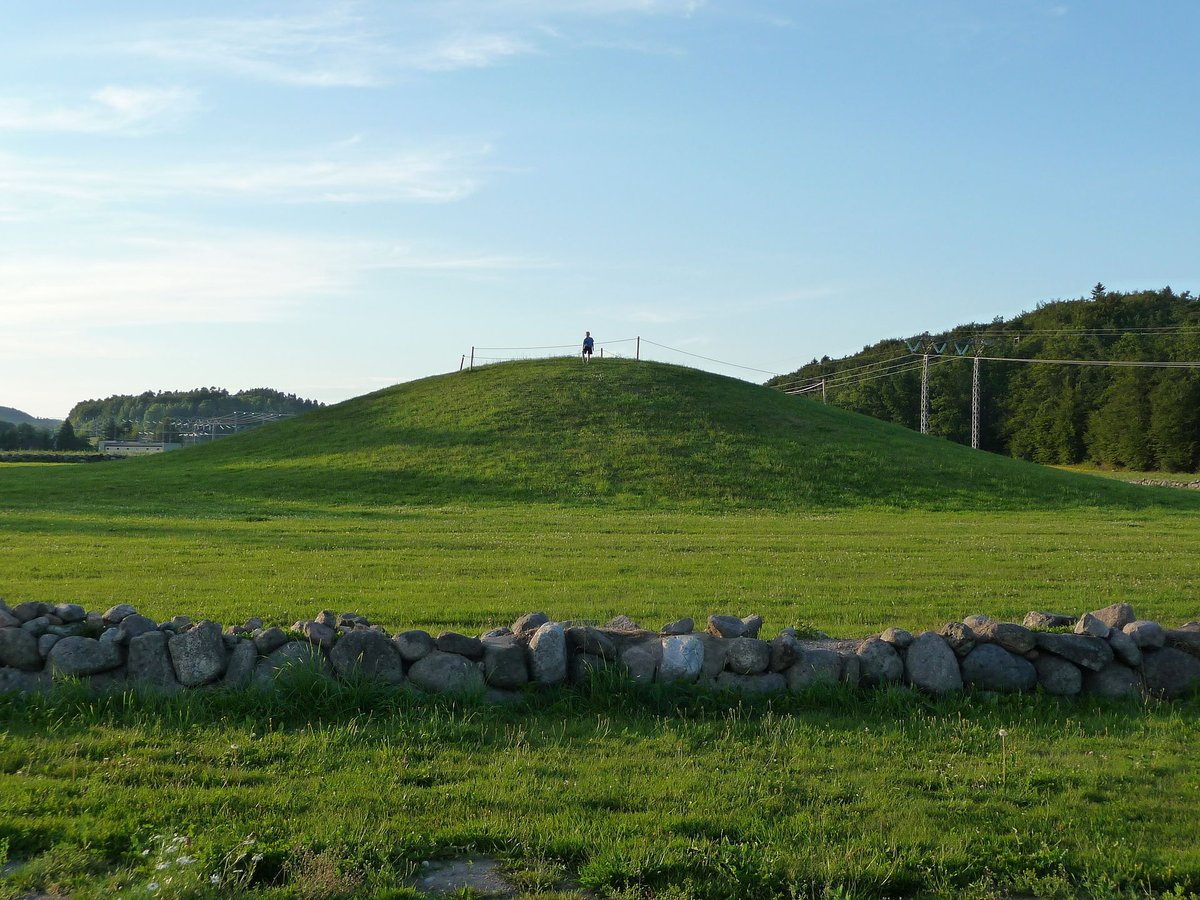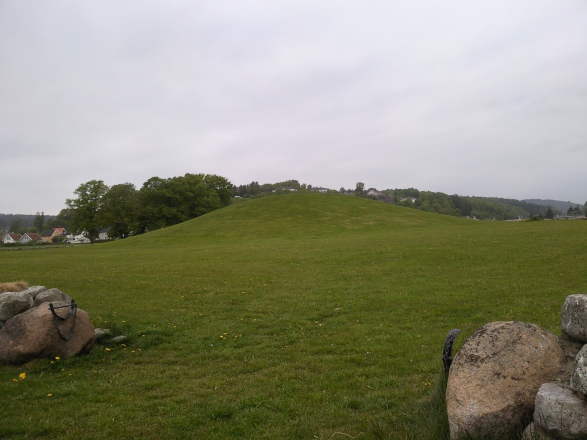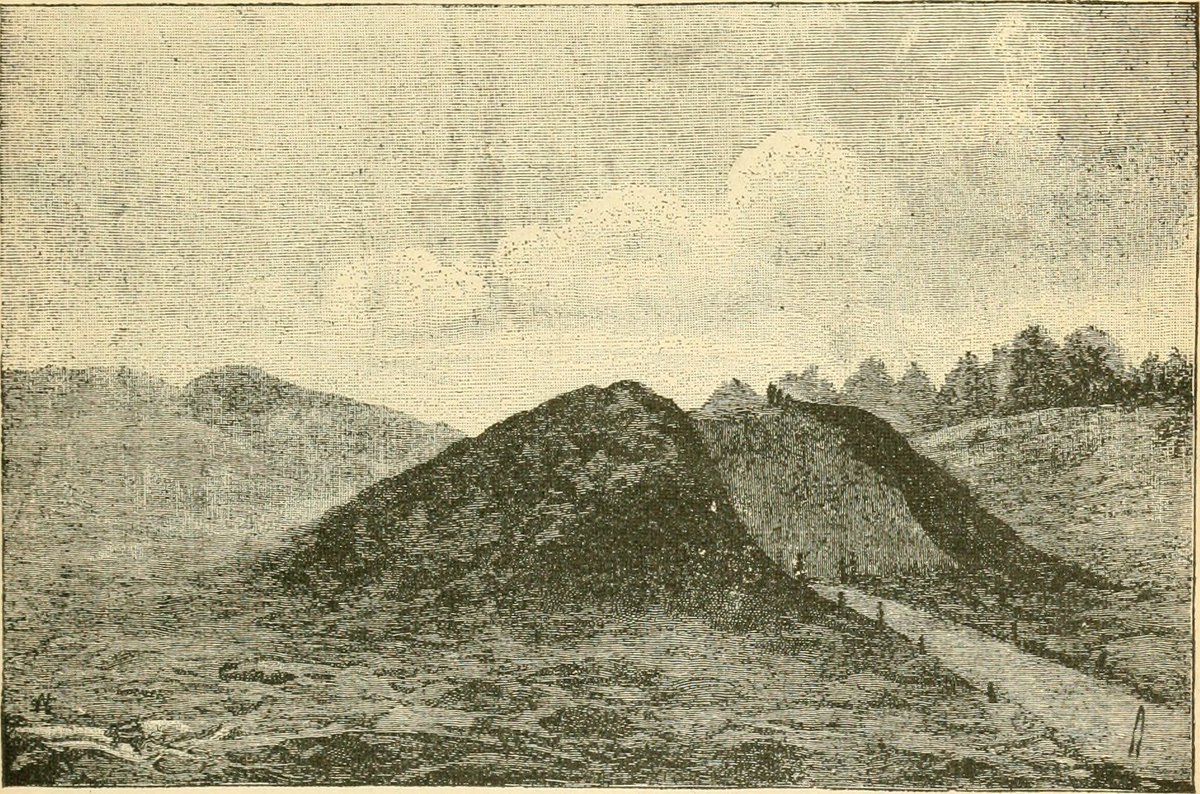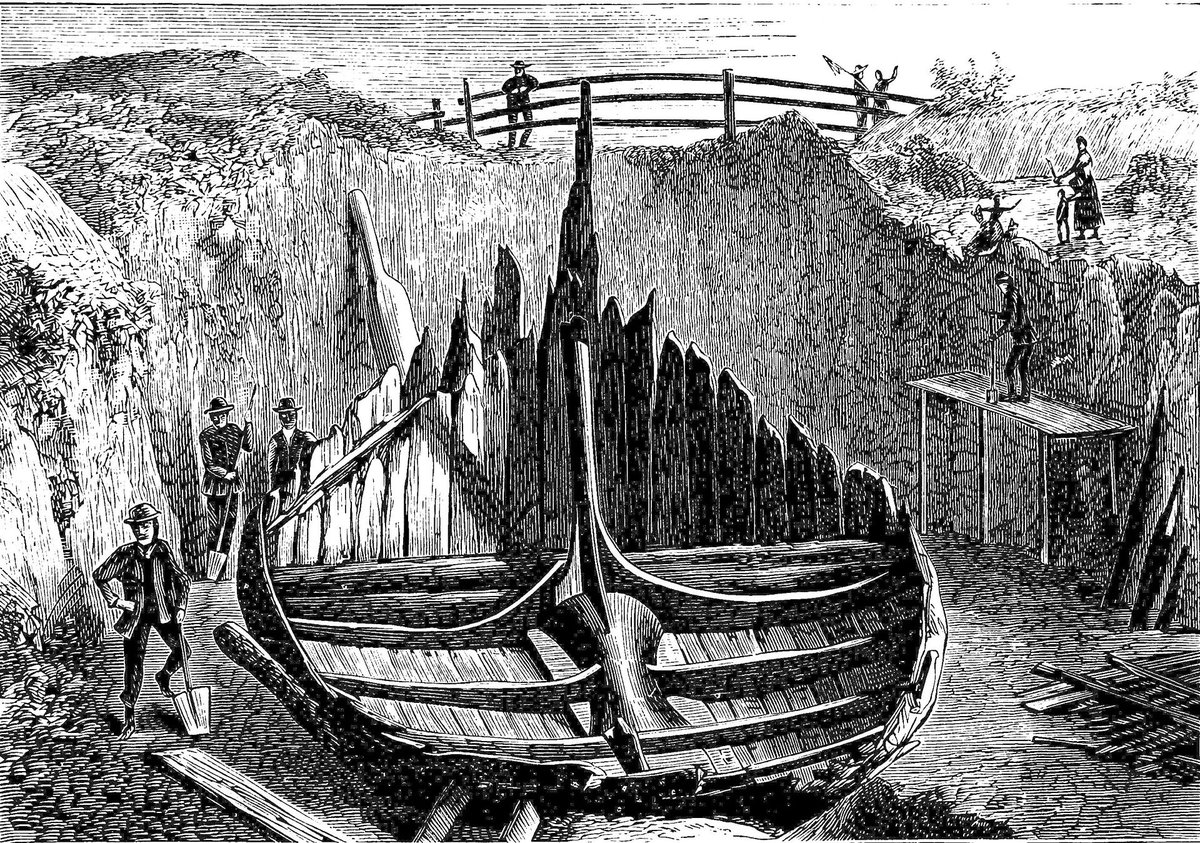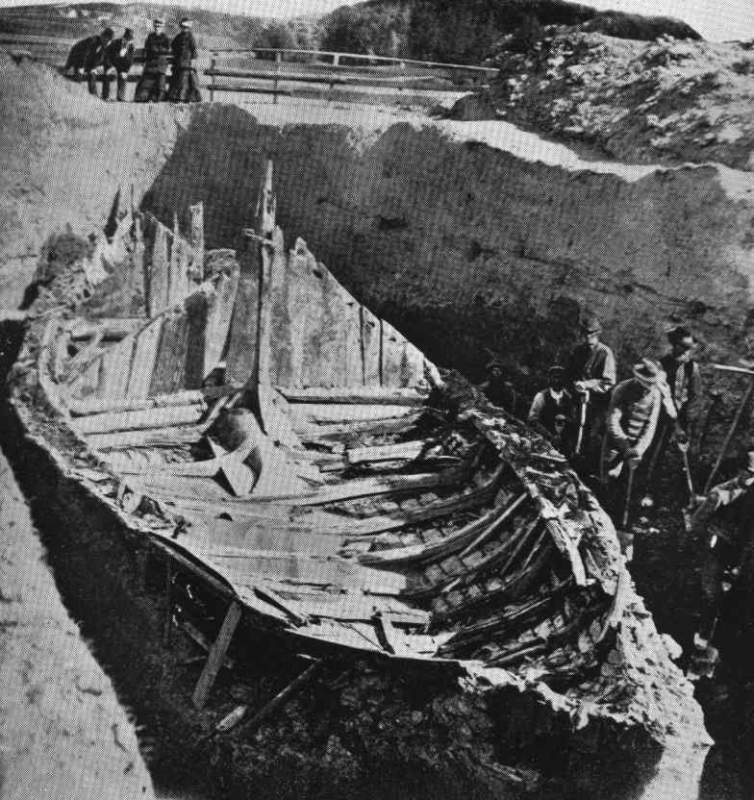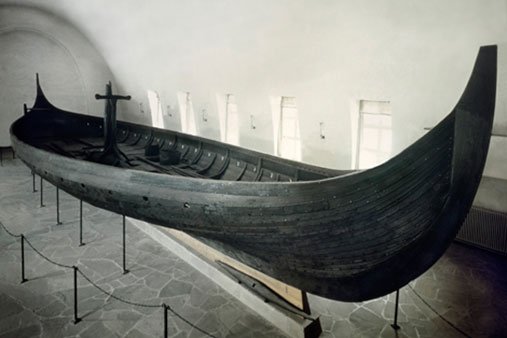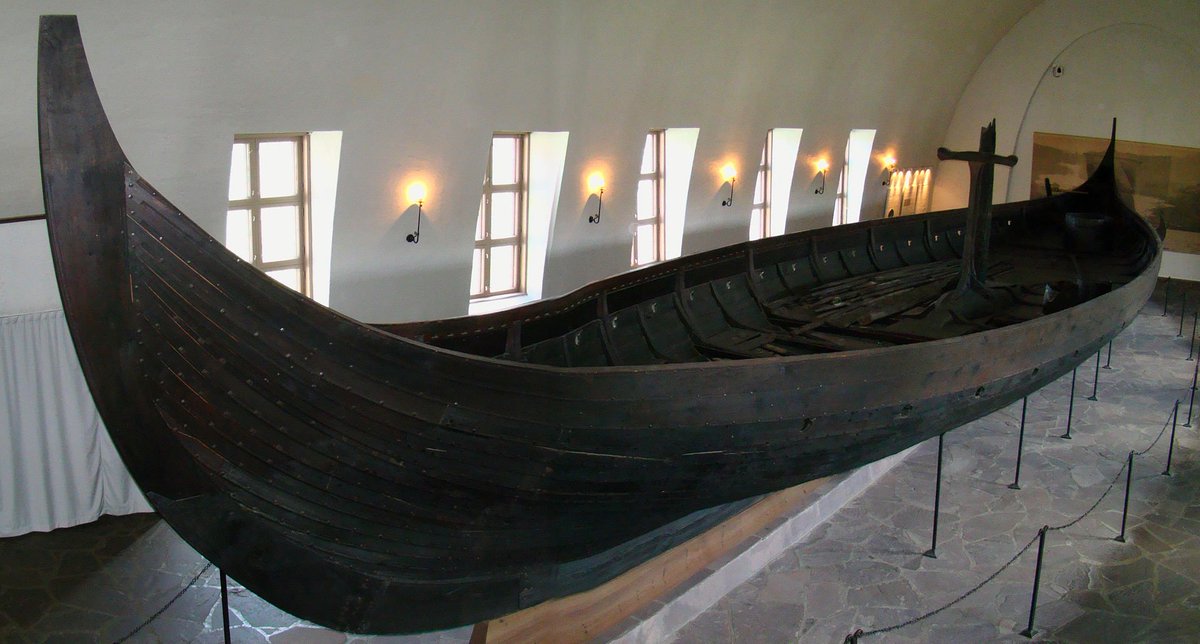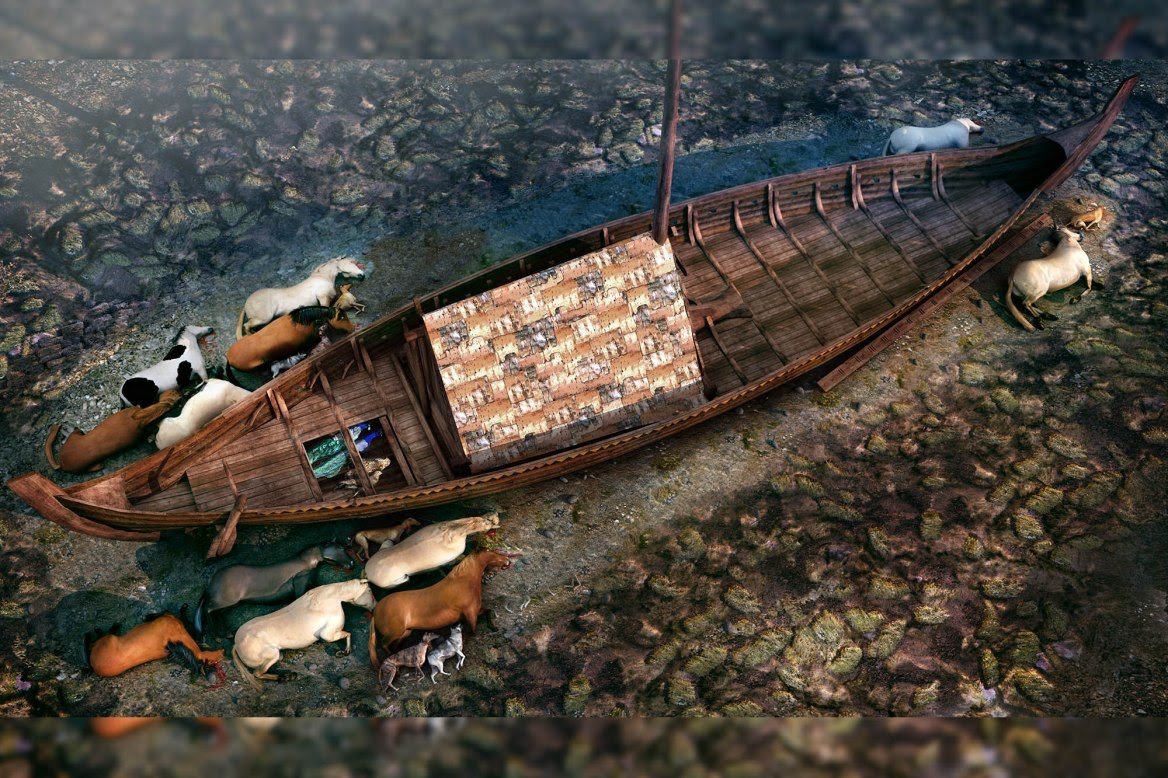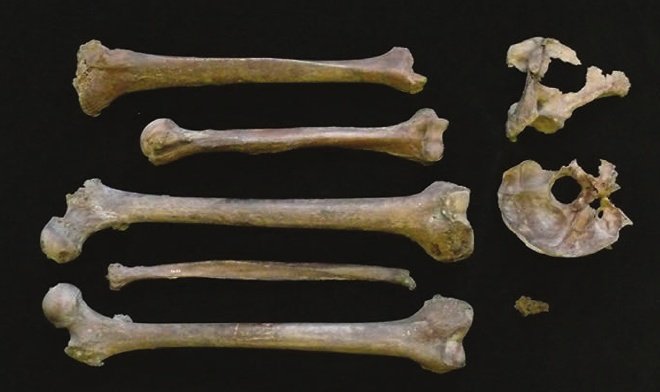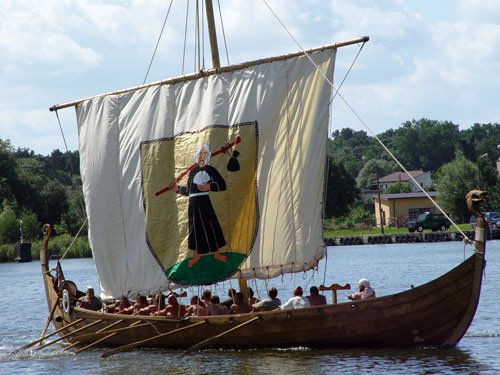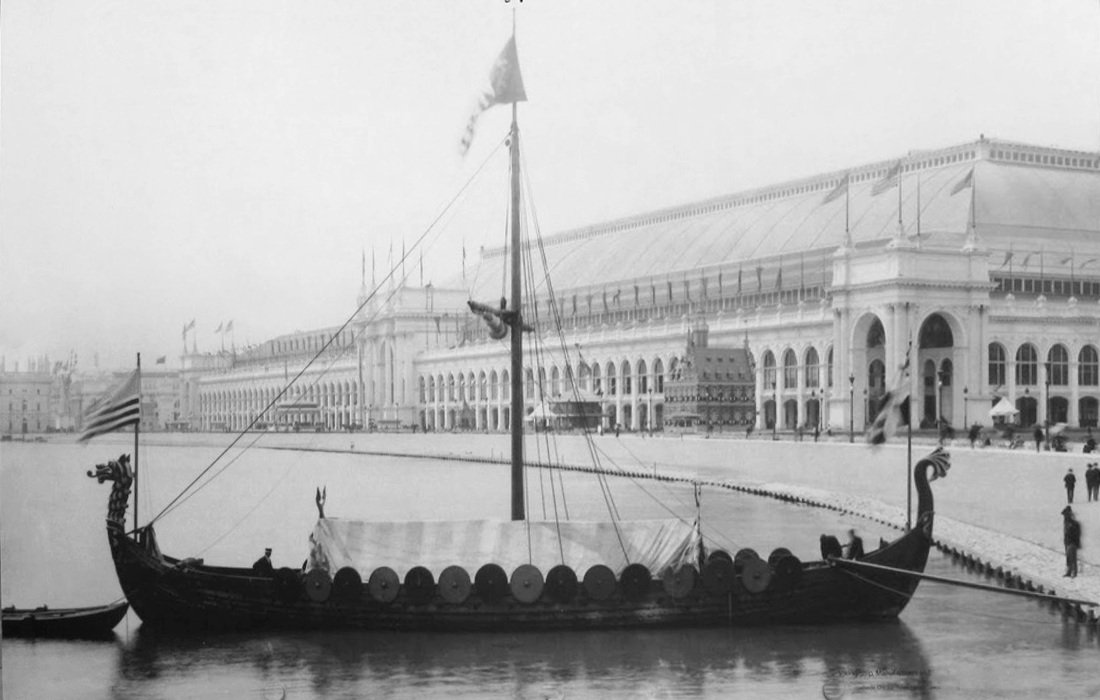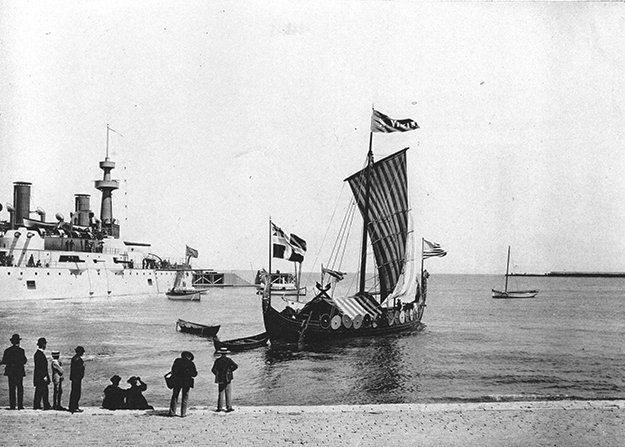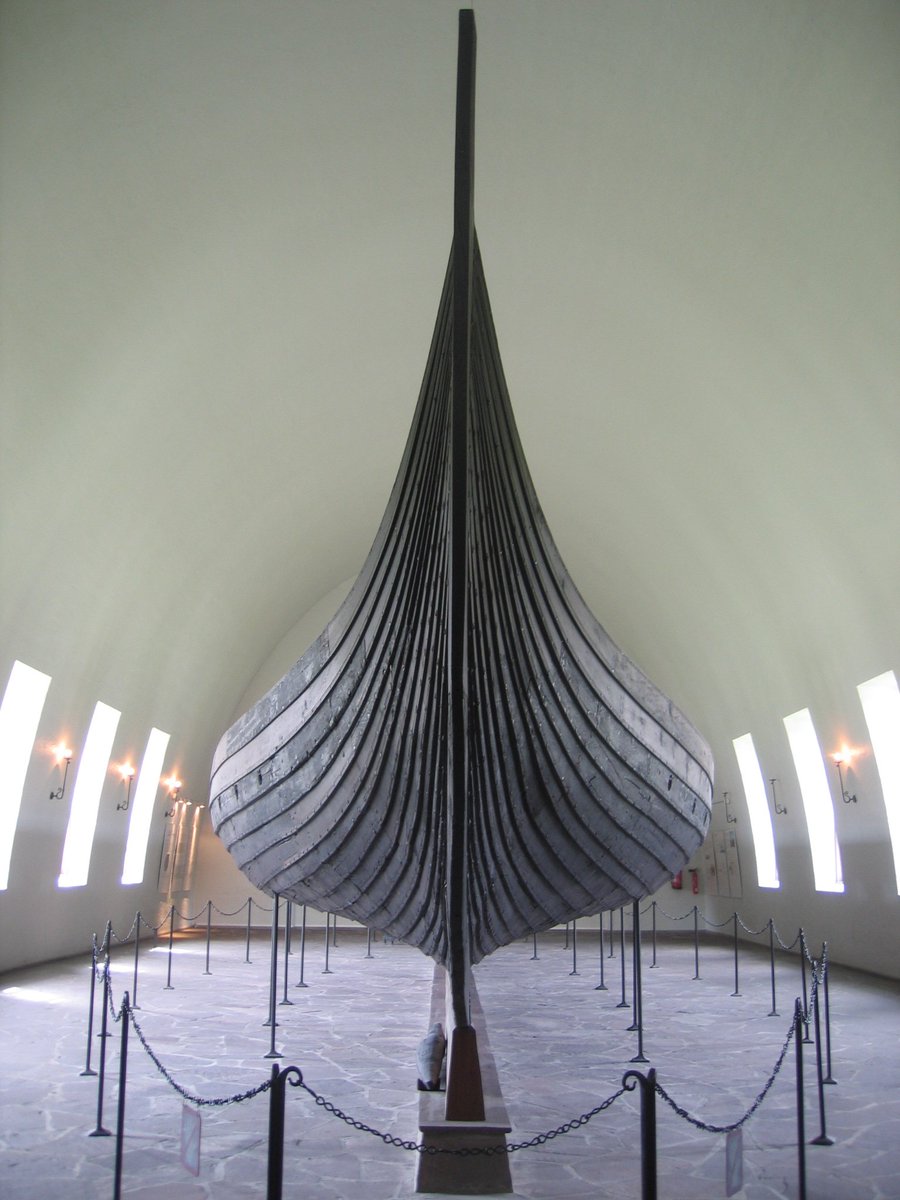For centuries, nobody thought much of the grassy mound that rose out of a field on a small farm in Gokstad, Norway.
Local people called it Kongshaugen, or "King& #39;s Mound". But most assumed this was just a fanciful piece of local folklore.
Local people called it Kongshaugen, or "King& #39;s Mound". But most assumed this was just a fanciful piece of local folklore.
That was until 1880, when two teenage boys decided to go digging in the mound.
The earth was still frozen. The digging was hard work. But soon they struck something solid. It was a piece of wood that looked like the wooden prow of an enormous ship.
The earth was still frozen. The digging was hard work. But soon they struck something solid. It was a piece of wood that looked like the wooden prow of an enormous ship.
The boys ran to find their parents, who contacted the early archaeological authorities in Norway.
Nicolay Nicolaysen, President of the Society for the Preservation of Ancient Norwegian Monuments, reached the site during February 1880 & began to make sketches.
Nicolay Nicolaysen, President of the Society for the Preservation of Ancient Norwegian Monuments, reached the site during February 1880 & began to make sketches.
Excavations soon began. They found nothing on the first day. But then in the second day, they reached the wooden timbers that lay below the mound.
The boys were right: this was a Viking ship burial. And the ship beneath them was the largest ever uncovered in Norway.
The boys were right: this was a Viking ship burial. And the ship beneath them was the largest ever uncovered in Norway.
The so-called Gokstad Ship is 23.8 metres long and 5.1 m wide. It& #39;s an example of a langskip, or longship, the very peak of medieval seafaring technology.
Its stem is carved of a single curved piece of oak wood, and it has 16 tapered planks on each side.
Its stem is carved of a single curved piece of oak wood, and it has 16 tapered planks on each side.
The ship was found with shields lining its sides, painted in alternating black and yellow, along with the remains of a cloth that may have been the sail
It was built to carry 32 oarsmen but could carry as many as 70, & the oar holes could be hatched down in rough weather.
It was built to carry 32 oarsmen but could carry as many as 70, & the oar holes could be hatched down in rough weather.
Dendrochronological dating suggests that the ship was built of timber that was felled around 890 AD.
The Gokstad ship was both flexible and fast, & its large 110m² sail could propel it to a top speed of more than 12 knots (14 mph).
The Gokstad ship was both flexible and fast, & its large 110m² sail could propel it to a top speed of more than 12 knots (14 mph).
Behind the mast, archaeologists found a burial chamber, decorated on the inside by a beautiful woven carpet. Inside the burial chamber, there was a made bed containing the buried person.
The boat was surrounded by animal bones too: 12 horses, 8 dogs, 2 goshawks and 2 peacocks.
The boat was surrounded by animal bones too: 12 horses, 8 dogs, 2 goshawks and 2 peacocks.
The human skeleton was that of a man in his 40s or 50s, of powerful build & between 181 and 183 cm tall, but his identity is unknown. Whoever he was, he must have been rich & powerful.
Damage to the bones of both legs from cutting blows indicate that he probably died in battle.
Damage to the bones of both legs from cutting blows indicate that he probably died in battle.
The Gokstad Ship is an example of a ship burial.
This style of burial was used for people of high status. Viking Age Norsemen may have believed that a form of transport was needed to reach the afterlife.
This style of burial was used for people of high status. Viking Age Norsemen may have believed that a form of transport was needed to reach the afterlife.
The ship& #39;s discovery caused a sensation around the world. In 1893, a replica was built at the Rødsverven shipyard in Sandefjord, Norway, by a Norwegian shipbuilder.
Called Viking, it successfully crossed the Atlantic Ocean under a Norwegian crew & achieved speeds of 11 knots.
Called Viking, it successfully crossed the Atlantic Ocean under a Norwegian crew & achieved speeds of 11 knots.
Viking sailed to North America, via Newfoundlandand New York, up the Hudson River, through the Erie Canal and into the Great Lakes to Chicago, where the World& #39;s Columbian Exposition was taking place in 1893.
It then sailed down the Mississippi to New Orleans.
It then sailed down the Mississippi to New Orleans.
Today the Gokstad ship reminds us of the ingenuity and determination of medieval peoples.
It shows us the lengths we& #39;ve always gone to for new shores and new horizons, and reminds us too that you never know what might be lurking beneath the surface of the familiar world.
It shows us the lengths we& #39;ve always gone to for new shores and new horizons, and reminds us too that you never know what might be lurking beneath the surface of the familiar world.
Find out more about the Medieval Vikings & their voyages across the Atlantic in Episode 4 of Fall of Civilizations. Including Viking poetry, Inuit folktales & a whole bunch of walruses...
(Available on Spotify, Stitcher & all other major platforms) https://youtu.be/dep69ARBNpE ">https://youtu.be/dep69ARBN...
(Available on Spotify, Stitcher & all other major platforms) https://youtu.be/dep69ARBNpE ">https://youtu.be/dep69ARBN...
And if you& #39;ve enjoyed the podcast, please consider supporting it on Patreon below. https://www.patreon.com/fallofcivilizations_podcast">https://www.patreon.com/fallofciv...
(The Gokstad ship can be seen today in the Viking Ship Museum in Oslo, along with the incredible Oseberg and Tune ships too) https://www.khm.uio.no/english/visit-us/viking-ship-museum/">https://www.khm.uio.no/english/v...

 Read on Twitter
Read on Twitter